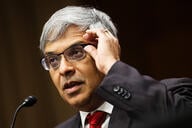You have /5 articles left.
Sign up for a free account or log in.
As the number of students going to law school drops dramatically, law schools are increasingly competing for students with lower undergraduate grades and LSAT scores.
Thomas M. Cooley Law School – the largest law school in the country – is known for admitting students other law schools would not touch. The reputation is increasingly inaccurate. Last fall, seven law schools had entering classes with lower median LSAT scores than Cooley’s.
Professors who study legal education worry that schools are enrolling more and more students who have not proved they can graduate law school. Equally concerning is that law schools are admitting and then graduating students who might not be able to pass the bar exam.
Five years ago, no American Bar Association-accredited law school had an entering class with a median LSAT score of less than 145. Now, seven law schools do, according to Jerome M. Organ, a professor at University of St. Thomas School of Law who studies the legal market. That means at least half the first-year students at seven law schools scored a 144 on the LSAT or lower.
The LSAT has a scale of 180 down to 120. The average LSAT score is around 150. The LSAT has a margin of error, but 145 is considered a symbolic line by legal education experts and school administrators.
"At one level, we’re in uncharted territory,” Organ said.
Southern University Law Center – part of the historically black Southern University and A&M College System – is one of those seven schools. Its median LSAT score last fall was 144. Still, it is running into competition for students.
“Certain schools never would have admitted a student with a 145 LSAT score several years ago,” said SULC's vice chancellor, John K. Pierre. “But this year they did and last year they did, and in some cases they are even offering students with that profile scholarships or tuition reductions.”
Enrollment at ABA-accredited law schools is the lowest it has been since 1973, even though there are 53 more law schools open now, according to Moody's Investors Service. The students still trying to get to law school also have lower test scores than in the recent past. does this mean, like, students who didn't get in, or? i'm not 100% clear on what this means SG
So the vast majority of law schools are not only shrinking in size but also admitting less-qualified students.
Organ’s work, based on annual disclosures law schools make to the ABA, shows that 136 law schools had a median LSAT score of 155 or higher in 2010. Now, only 101 schools still have an entering class with a median LSAT of 155 or higher.
The seven law schools with the lowest median LSAT scores portray themselves as schools of opportunity for students who think they can make it but may not have the scores or grades to prove it. The same schools can also be accused of irresponsibly admitting some students who don't belong in law school.
For students, the risk is not just time but money. Students with lower LSAT scores pay more to attend law school than students with higher scores. Organ found two-thirds of students with scores below 150 are paying more than $30,000 a year for law school, but they may not pass the bar and have "limited employment opportunities through which to recoup their investment in a legal education." add "he said," if that's right, just for clarity? SG The average student who scored 155 or higher pays less than $30,000 a year, attends a better-regarded law school and has better chances after graduating.
Three of the seven schools with the lowest median LSAT scores are in the for-profit Infilaw system. Those are Arizona Summit Law School, Florida Coastal School of Law and the Charlotte School of Law in North Carolina.
One candidate for dean of Florida Coastal became a cause célèbre last year after he was escorted off campus during a presentation to faculty.
The candidate, David Frakt, told the faculty it was unfair and ethically questionable to admit so many students with a 144 or lower. He said such scores indicate a poor aptitude for law school and mean that students face “extreme risk” of failing the bar exam. The median LSAT score for Florida Coastal’s entering class last fall was 143.
“For me, that 145 – going below that, even 145 itself – should be a no-go zone,” said Frakt, an Air Force lieutenant colonel and former legal scholar. “That really was conventional wisdom five years ago.”
Frakt said he warned Florida Coastal professors that students with low LSAT scores could risk the school’s ABA accreditation in years to come. The accreditor forbids schools from admitting students who do not “appear capable” of completing law school and passing the bar exam.
Increasingly, champions of a law school education tout law school as a solid path for students who have no intention of becoming lawyers but could use legal thinking and knowledge for other jobs. At a recent press conference hosted by the leaders of the Association of American Law Schools, there was a good deal of talk about exciting opportunities for law school graduates in fields unrelated to the practice of law.
As the number of incoming law students has fallen, most law schools have been left with a choice: They can maintain their admissions standards and suffer enrollment declines, or they can lower standards to keep up enrollment.
Barry Currier, managing director of accreditation and legal education at the ABA, said schools could run into trouble. If those lower-profile students flunk out, it would be a sign that schools are taking students they are not able to graduate.
“A school that has relatively lower credentials on the front end and high attrition may have an issue, even if their bar pass rate is good,” Currier said.ABA reaccredits schools every seven years.
It is also bad for law schools if their students graduate but fail to pass the bar, a sign that schools may be passing students through without preparing them for actually being a lawyer.
In the past two years, the number of students who have dropped out, flunked or transferred to another law school has not changed substantially, according to ABA data. It is not yet known how they will fare on the bar exam.
Currier said there are ways to check in on law schools in between regular ABA visits, but none of that interim monitoring has turned into a full-blown reaccreditation process and no schools are on probation.
“Our process is sort of set up to look back at how a school has done with the students it chose to take and how the program is offered,” he said.
Frakt, who is a controversial figure in some circles, argues the ABA is not doing enough and law schools are taking advantage of the accreditation cycle to admit students who may not pass the bar. Because of the time between admission and when students take the bar exam, the law schools admitting less-qualified students are not yet facing ABA scrutiny.
“There’s a window of opportunity there where their bar numbers don’t look too bad, so they can continue to draw in students, and make money off students,” Frakt said. “Because those students don’t realize how weak their chances really are.”
The public information available about law schools also leaves something to be desired.
The bar passage numbers, for instance, don’t on their own give students a great sense of their chances in law school. If a law school class begins with 100 students and 30 drop out over the course of law school, that leaves 70 who graduate. If 49 of those 70 pass the bar, the school’s bar passage rate will be 70 percent. But that would mean that only 49 of the 100 students the school originally admitted ended up passing the bar.
Reports released by the ABA allow the public to find out these numbers, but it involves looking at reports from several different years.
Also, because law schools report LSAT scores for the 75th, 50th and 25th percentile of their class – and not the average LSAT score – a school could have a quarter of their students with a 145 or above but 24 percent of their students with far, far lower scores. I don't quite understand these percentages (preceding sentence) -- can you double-check? SGNo one says it’s remotely likely, but in theory, 24 percent of a law school class could have scored a 120 on the LSAT – the lowest score possible – without its being detectable by publicly available information.
The LSAT itself is of debatable use. It’s meant to predict first-year performance, but it is used as an imperfect way of predicting graduation and bar passage rates.
Thomas Cooley, now known as the Western Michigan University Cooley Law School, has always relied on more than just the LSAT score. But unlike some other schools, its median LSAT score has not fallen below 145.
Organ, Frakt and others suspect that is because Cooley has long dealt with low-scoring students and knows it cannot dip much further into the applicant pool without seeing its graduation rate or bar passage rate deteriorate.
Don LeDuc, the president and dean of Cooley, said the school’s level student profile is a result but not the intent of admissions policies that have remained virtually unchanged despite the shocks in the market. It is working on a new admissions metric that relies more on college grades than LSAT scores, but DeLuc predicted it will not change the LSAT score much, if at all.
Because it has not lowered its admissions standards, Cooley has taken quite a hit. Its first-year class had 1,161 students in 2011. This year’s incoming class was about 60 percent smaller – just 445 students. As a result of the enrollment losses, Cooley is working to close one of its five campuses.
LeDuc said Cooley, a private nonprofit, is facing more competition for students with an LSAT score of around 145.
The dean worries about law schools that do not have as much experience with low-LSAT or low-GPA students.
“I would hope they are not going to just bring them in and do exactly what they did with their student profile in the past,” LeDuc said.
Cooley uses a predictive model to tell all students their chances of success based on their GPA and LSAT. The school doesn’t admit anyone with less than a two-thirds chance of succeeding.
Students know, in other words, that they might have an uphill climb.
That may not be so clear for students at other schools.
Jay Conison, dean of the Charlotte School of Law, said his school does not explicitly tell students their chance of success. Instead, he said, advisers tell students what they will have to do to succeed.
Charlotte is part of the for-profit Infilaw system. Its entering class last fall had a median LSAT score of 142, down from a median score of 148 in 2011.
Conison said the college is offering more students conditional admission and then fully enrolling them if they pass two pre-law classes. The school is also working to provide students more help while they are enrolled and as they prepare to take the bar – but the school will also change what it teaches.
“It is certainly very clear that it is a population that is going to require more of the kind of support mechanisms in the school that we provide for our students,” he said. “And it also will mean that the curriculum will have to be adapted to the different character of the students, and it may mean that more intensive support for bar passage will have to be provided.”
At Appalachian School of Law, a stand-alone law school in southwestern Virginia, the median LSAT score for last fall's entering class was 144. That’s the same as it was in 2011, but enrollment has fallen dramatically since then. In 2011, there were 146 incoming students. Last fall, there were 48.
Donna Weaver, a spokeswoman for the school, said that the enrollment drop meant that Appalachian had to lay off faculty but was able to protect its LSAT score. The school worried about admitting students with lower LSAT scores because it feared they would not be able to pass the bar.
But Appalachian, a private nonprofit, is also running into competition for students from other schools offering them scholarships.
“The price wars are scary,” Weaver said. “We can’t afford to just drop our tuition altogether."



